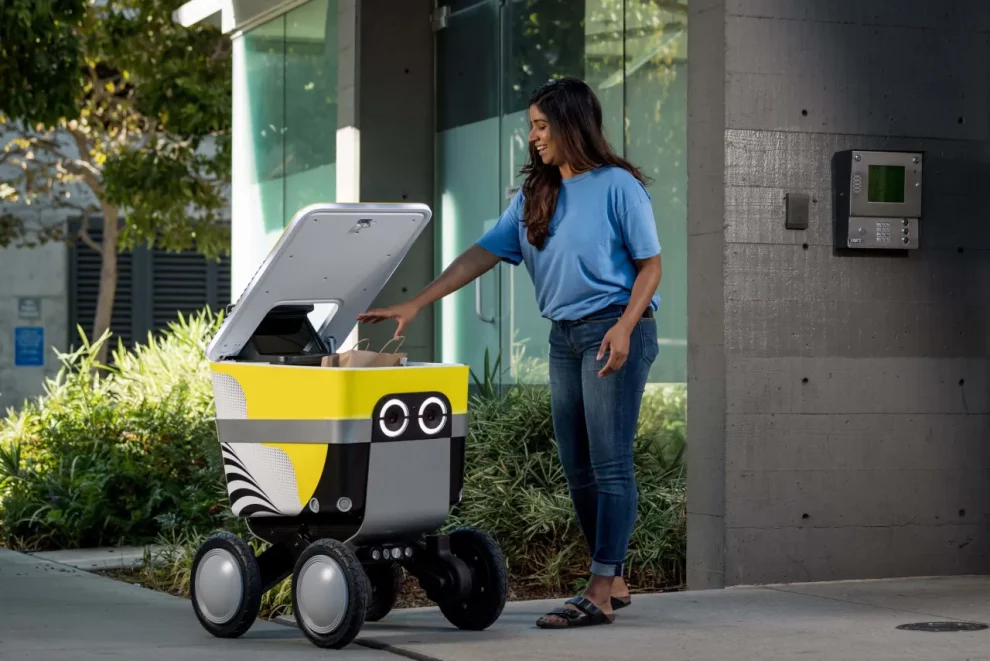Last-mile delivery, the final and most important stage of getting your order from the warehouse to your door, is complex. Congestion, inefficient routes, unpredictable road conditions, and increasing demands for faster, cheaper service create significant hurdles. But artificial intelligence (AI) promises to conquer these challenges as the shining hero emerging to revolutionize last-mile delivery.
AI and autonomous vehicles (AVs) form an ideal combination to optimize last-mile transportation. By embedding AI into all facets of last-mile logistics, we open opportunities for enhanced route planning, boosted efficiency, and better customer fulfillment. Here are six ways AI elevates autonomous last-mile shipping:
1. Route Optimization Reaches New Heights
Traffic, construction, bad weather? Not a problem. AI-enabled route mapping goes far beyond traditional platforms limited by fixed maps and data. Instead, it taps real-time traffic feeds, weather forecasts, and even uses predictive technology to foresee accidents before they occur. Routes continuously adjust automatically based on current road conditions.
An AI-powered AV may know to skirt rush hour bottlenecks or find alternatives when rainstorms roll through. This saves hours otherwise wasted in backups and reduces excess fuel consumption from idling vehicles, cutting costs as well as the carbon footprint.
2. Predicting Demand Across Delivery Zones
Consumer appetite for instant deliveries changes hour to hour. AI provides more than just a reactive solution. By scrutinizing past data plus cues like local events, customer buying habits, and social media buzz, AI platforms achieve exceptional accuracy forecasting upcoming delivery volumes across all regions.
Armed with AI-generated demand predictions, logistics companies stay steps ahead. Pre-positioning cargo vans in high-traffic neighborhoods ensures lightning-fast turnarounds and happier patrons.
3. Wringing Out Efficiency From Every Corner
AI fine-tunes more than travel routes. It combs shipping data to spotlight opportunities, suggesting tweaks like more logical packing configs or eliminating unnecessary stops. Applied to AVs, AI helps predict potential maintenance needs before they become problematic.
Streamlining logistics through AI translates into faster fulfillment, lower overhead expenses, and smoother operations from start to finish for businesses as well as customers.
4. Emphasizing Safety From the Ground Up
For autonomous cargo vehicles navigating congested roadways, safety ranks as the top priority. Here also, AI lends a helping hand. Cutting-edge visual recognition and advanced sensors supplied continual environmental feedback to the AV pilot system.
By perceiving hazards in microscopic detail, AIs rapid reaction times help steering systems take quick evasive maneuvers when required to avoid accidents, keeping cars, pedestrians, and precious payloads secure.
5. Personalized Delivery Windows
Tired of waiting in all afternoon for deliveries that invariably show up the minute you need to step out? AI provides a fix for frustrating missed delivery attempts. Analyzing individual customer preferences and availability patterns, AI can pinpoint ideal personalized time slots to drop off packages when recipients are likely home.
Imagine getting notifications that your grocery order will come between 6 and 7 pm when you’ve typically returned from the office. No more missed connections or wasted time anxiously tracking orders. AI enables delivery precision tailored for your schedule.
6. Supporting Drivers Every Mile
AI extends past route planning to assist human delivery drivers as a helpful virtual partner. As vehicles traverse assigned neighborhoods, AI conveys real-time traffic and construction updates while suggesting quicker alternatives if delays emerge. For complicated drop-offs, AI helps decipher convoluted delivery instructions.
AI also steps in answering customer questions via chatbot interactions, freeing staff to resolve higher-level order issues. Every mile of the route, AI works tirelessly to support the driver’s success.
The Exciting Road Ahead
We’ve only begun unlocking the vast possibilities AI brings optimizing autonomous last-mile delivery. As the supporting technology matures, expect even more dramatic gains in safety, sustainability, efficiency, and satisfaction.
However, challenges remain before realizing AI’s full potential. Policy frameworks must evolve at the pace of innovation to support AV testing and adoption. Public trust in autonomous vehicle tech needs reinforcement through robust security and accountability measures.
Ultimately, AI aims to enhance human capabilities throughout the last mile of the supply chain, not supplant them. By jointly harnessing strengths of both, we can create last-mile solutions that finally deliver the reliability, speed and care that modern consumers expect.
















Add Comment